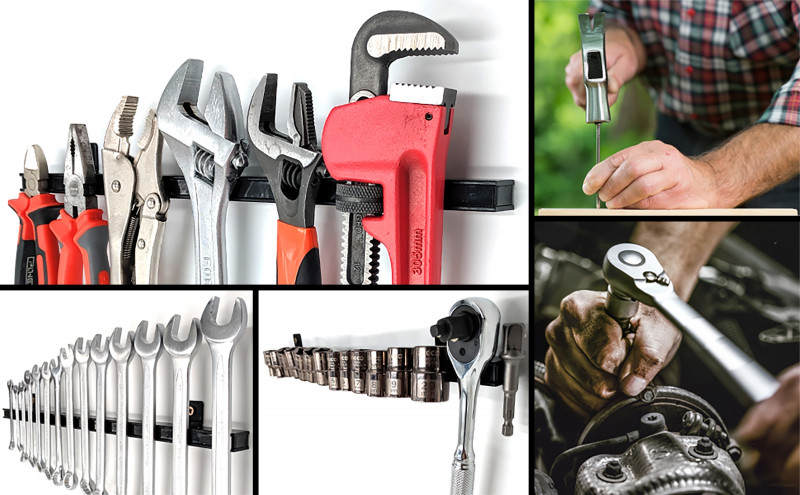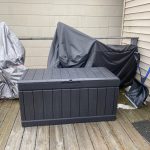This is a sponsored guest post.
Storage Shed Foundation: Do You Really Need One?
It’s time to build your new outside storage building. You’ve carefully chosen the style and size of your shed. Now it is time to decide what you actually need and what you can do without. Your first inclination may be that you don’t need a foundation for your shed, especially if you just want to use it for storage or gardening. On the surface, it may seem as if you will save time, money, and hassle by foregoing a base. However, it is a decision you will regret in the long run, and here’s why.
Foundations for Every Preference and Budget
There is a common misconception that the foundation of your shed must be expensive and labor-intensive. While you are more than welcome to go this route, you certainly do not have to. In fact, there are many storage shed foundations, including pavers, pallets, concrete blocks, and so many more. There is no doubt that you will be able to find the base that works best for your unique situation. Let’s take a closer look at why every shed, no matter the purpose or the size, needs a foundation.
Maximum Functionality
For outdoor storage buildings to function correctly, they must be built on level ground. Otherwise, the entire structure will have a slant, which will make it difficult to securely store belongings, especially on the walls. For example, imagine trying to store pots on a shelf that isn’t level or worse, a heavy piece of equipment such as a lawnmower on a floor that it very well could roll on. This means you either have to scotch the tires or refrain from using your shed for these purposes. Being unable to use your building for its intended purpose defeats the purpose of having it in the first place.
The other issue is that an unlevel shed can also result in doors that do not work properly. They have a tendency to drag the ground, which can make them hard or nearly impossible to open or close. Using the doors becomes at the least very difficult and, in some cases, impossible. Installing a shed base ensures a level shed that provides maximum functionality for its intended purpose.
Increase Stability
A shed without a foundation is not nearly as stable as a building with a foundation. Storage shed foundations increase the stability of the structure. The walls are better anchored to the base as opposed to the ground. This means your outdoor building can better withstand the elements such as high winds, snow, rain, etc.
For instance, a structure without a foundation can be compared to a box without a bottom. As you know, a box that does not have a base is not nearly as structurally sound or beneficial as a box with a bottom. The same is true for a storage shed.
Lengthen the Life of Your Shed
If you construct your storage building without a foundation, the materials in direct contact with the ground are vulnerable to the elements. They are susceptible to absorbing moisture which results in rotting and premature.
Building a base gets your shed off of the ground, keeping the materials dry and increasing the life of your shed.
Adequate Drainage
Water and moisture are your building's worst enemies and can wreak havoc in a very short period of time. A shed that is slightly off the ground will allow for proper drainage. Building a foundation will keep water away from the foundation and out of your structure. This prevents water from seeping in and damaging the content of your shed. Adequate drainage also prevents the construction of your shed from rotting. Ensuring drainage is crucial for the protection of your investment.
Proper Ventilation
Understandably, most people only think of ventilation as it relates to the interior of a space. However, external ventilation is just as important. Foundations lift your shed off the ground and allow for proper ventilation. This prevents mildew and mold from growing underneath the shed. An accumulation of mildew will cause the walls of your shed to decay and rot.
For instance, using a foundation of concrete blocks will allow you to control your outdoor storage shed’s height. The higher the shed, the more air that can pass underneath the structure, allowing for adequate ventilation.
Easier to Move
Depending on the type of shed foundation you choose, it can be easier to move in the future if need be. Structures with bases and subfloors are more stable, which makes them easier to maneuver and load on a truck or trailer for transport. This is especially true if your shed has a subfloor or a foundation that can be moved with it.
A Foundation is Worth It!
Although it is tempting to cut corners by not building a foundation for your shed, it is very much worth it. A solid base will improve your shed’s functionality, increase its lifespan by minimizing the risk of early rot due to unnecessary exposure to the elements, and so much more. Failing to install a storage shed foundation will result in you making repairs or replacing damaged components of your building much quicker than you should have to. Protect your investment by choosing and installing a shed foundation from the start.
Hi there! I am Emily Evert, the owner of Emily Reviews. I am 28 and live in a small town in Michigan with my boyfriend Ryan and our two pugs. I have a large family and I adore my nieces and nephews. I love reading memoirs, and learning about child development and psychology. I love watching The Game of Thrones, Teen Mom, Sister Wives and Veep. I like listening to Jason Isbell, John Prine, and other alt-country or Americana music. I created Emily Reviews as a creative outlet to share my life and the products that I love with others.
This post currently has 6 responses.
-
This is an interesting post. We have a shed that connects to the covered carport that is on concrete.
-
Such great info. Easy to make mistakes so this really helps to know what you need to know beforehand
-
We had a new shed put in several years ago and it is on a concrete foundation. It is very secure and useful.
-
These are very good points to make about whether or not to put a foundation under your shed! I have never really thought about it before but I can definitely see why you would want one. I would consider it more than worth it! Thank you so much for sharing.
-
On-grade shed bases are exactly what they sound like: foundations you install on the ground. These backyard buildings rest on the material and have contact with the ground. Concrete pads, gravel, and pavers are common examples other builders use in their projects.


















This is all true. I am looking into a new shed and the foundation is the first thing I have to decide on.